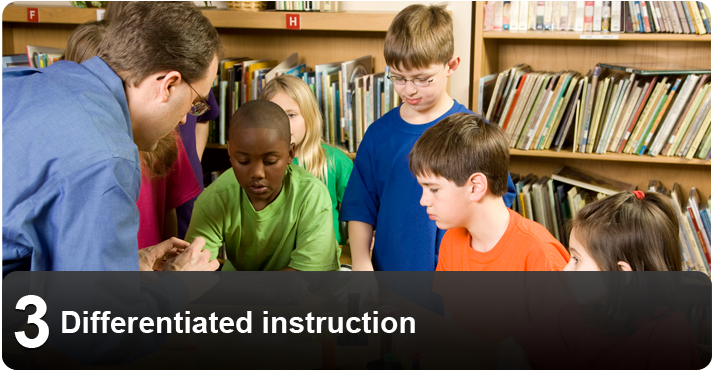“Teaching is a strategic act of engagement.”
– James Bellanca, “Teaching for Intelligence: In Search of Best Practices”
The pervasiveness and severity of their behaviour difficulties may interfere with the classroom learning and academic success of students with behaviour disabilities. As a result, they may:
- miss out on many academic experiences
- lack basic academic skills and concepts
- have underdeveloped work and study skills
- have developed habits related to avoiding or escaping challenging academic tasks
- have negative attitudes toward school and learning, and view themselves as unsuccessful learners.
As students’ behaviour improves and stabilizes, they may need continual instructional adaptations and accommodations to support their academic learning. Effective instruction meets students at their level of performance and helps them move forward.
Consider the timing of activities
Some students learn better and are more responsive in the morning; others do better in the afternoon. Try to provide more challenging tasks and activities during times when the student is more responsive, and reduce expectations and give more breaks at other times. Also, alternate less-interesting tasks with highly interesting ones. For example, the sequence could be:
- read aloud with teacher
- short written assignment
- play a game with a partner
- revise writing assignment
- physical activity.
Behavioural momentum involves getting a student engaged in a preferred task, then moving fairly quickly into a less preferred task while he or she is still active and in a positive state. For example, playing a game of snakes and ladders for a few minutes, then putting sight words on some of the squares to be read along the way. Use instructions that are likely to be followed quickly and easily, use brief simple requests, then change requests to less preferable requests after the student has readily responded to several.
Teach students strategies for completing tasks
If students have difficulty completing tasks, invest some time in teaching them the necessary skills. Following is an example of a step-by-step teaching sequence.
- Establish a “task-completion time” twice a day. Use a specific visual cue (such as a sign) that indicates this training time is about to begin.
- Set the timer for the goal time. Begin with a duration appropriate for the student (e.g., two to 10 minutes) and then increase the time incrementally after the student has successfully completed the task within the time limit during three out of four sessions. Continue to increase the time when the student meets the criterion, until the time is comparable to the time expected of other students in the class.
- Provide students with tasks that are appropriate for their academic skill level and that they can easily accomplish in the allotted time.
- Provide a prearranged reinforcement for successful task completion.
- If students do not complete the task in the allotted time, simply take the task away and give no positive reinforcement. Do not give negative consequences either, as this is simply a training and practice session. If students do not successfully complete the task in at least two out of four sessions, try to provide for success-oriented learning by reducing the time or making the task easier.
- Praise the student for:
- doing the task (e.g., “You did a great job of matching the cities to the provinces”)
- completing the task (e.g., “You reached your goal of completing the whole page”).
- Tell the student he or she is a “task completer” when tasks are completed in the time allotted for all students.
- When the task completion session time is within four minutes of the regular class activity time, begin phasing out the praise and rewards, using them only intermittently.


